Does city life make animals smarter?
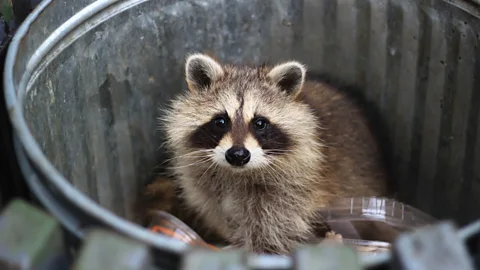 Getty Images
Getty ImagesAs rodents, birds and scavengers interact more with human landscapes, their behaviour is changing to make the most of our urban environments.
Some thought they would be the Fort Knox of bins. Well, sort of. Resistant to marauding raccoons, or at least that was the hope. To residents of Toronto, Canada, raccoons are a familiar pest. The mammals adore rummaging through household waste, seeking out scraps of food. But a few years ago, the city launched new rubbish bins with securely locking lids.
And yet, the wiliest raccoons still found a way to get inside them. Video captured by a reporter at local newspaper The Star shows one of the animals tipping over a bin, and – impressively – turning the handle lock on the lid to gain access to the contents.
Before the bins were deployed, they were tested with “dozens and dozens” of raccoons by Suzanne MacDonald at York University, Toronto, who studies the animals. None ever managed to break in so she was surprised when she saw that the bins could, in fact, be breached.
You might also like:
“Only a few raccoons have figured out how to break into the bins,” she says, two years later. “I can’t imagine how they would be modified, frankly, because some raccoons will always figure out how to break things.”
It raises a question, though. Do the secure locks, traps and barriers we use to keep so-called pests at bay actually prompt them to learn or evolve in order to outwit such measures? We already know that, in trying to poison urban rats, we are encouraging them to develop resistance to those same chemicals. Could the same thing be happening with the intelligence, or cognitive prowess, of pests?
The first thing to note, says MacDonald, is that Toronto’s raccoons are not dependent on cracking into the locked bins for food, so there is no selection pressure prioritising the survival of the raccoons that know how to bust open a bin. Plus, she adds that raccoons are not social learners, so the raiders of the locked bins won’t have taught others how they did it.
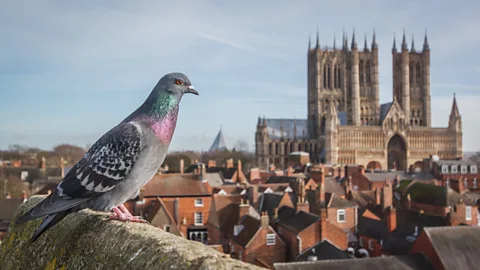 Getty Images
Getty Images“The only way the few that have broken in have done it is to use leverage to overturn the bin on to the latch mechanism, which breaks it,” adds MacDonald. Those instances were, she says, “a fluke”.
And yet a certain degree of inquisitiveness is required to even attempt tampering with a bin like this. Intelligence has probably been quite important in allowing certain animals to thrive in human-altered places, says Emilie Snell-Rood at the University of Minnesota.
Take the elephants that can break electric fences or move spike beds out of the way to get into a property. Or the Japanese crows that famously drop nuts into the middle of a road so that vehicles will drive over them and crack them open. They’ve even worked out that it’s better to do it near traffic lights so they can go and grab the cracked nut when traffic stops.
On the other hand, a particular species might simply have evolved in a way that happens to make it likely to succeed in urban environments, says Snell-Rood. They’re what is known as “pre-adapted”.
“A typical story for that is pigeons,” she says. “Historically, they presumably nested on cliffs – skyscrapers are kind of like cliffs so it wasn’t that hard for them to shift into cities.
“But they’re not particularly smart birds relative to some others.”
Still, they may fairly be described as urban opportunists. Londoners have long been amused by pigeons that peck crumbs from tube station platforms, jump on to a train when it pulls in, and then hop out at the next station, where their crumb-hunting resumes. That’s the thing about life in the city – practically everyone ends up depending on public transport at some point.
Intelligence can help an animal become a true city slicker, though. Traits such as boldness, behavioural flexibility or attraction to novelty can all come into play, says Sarah Benson-Amram at the University of Wyoming.
She and colleagues described how these attributes can help animals cope with specific challenges in towns and cities in a paper published last year. Being curious and brave enough to engage with unfamiliar objects could help an individual gain access to food or shelter, for example.
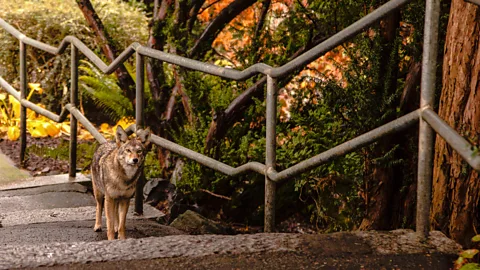 Getty Images
Getty ImagesLike their bin-breaching cousins in Toronto, racoons in Wyoming have demonstrated a surprising ability to interact with human-made objects. Benson-Amram’s colleague, Lauren Stanton, a PhD candidate at the University of Wyoming, is studying how raccoons in the town of Laramie respond to puzzle boxes that dispense food rewards.
And these raccoons are being tested deliberately. Battery-powered containers are placed in suburban areas and only give out a reward, a piece of dog food, if the raccoon presses one of two buttons inside the box. Once the raccoons learn that it’s the left button they need to press, the mechanism is flipped. Gradually, they learn that they now need to press the button on the right instead.
“They are making rapid associations and they are able to alter their behaviour,” says Stanton. “And they get better at this over time.”
The full results of the study are yet to be published, but the work suggests yet again that this species possesses cognitive gifts that might be useful in urban situations.
It’s still not clear, though, if urban environments are actually making pests cleverer over time than they otherwise would be.
“We may actually be creating smarter urban wildlife,” says Benson-Amram, but she notes that it’s hard to prove that there are big differences in cognitive performance between urban and rural individuals of the same species. Or, in fact, whether urban pests today are smarter than their ancestors 100 years ago.
“That’s actually the hundred million dollar question,” says Christopher Schell at the University of Washington.
He gives the example of coyotes. They often raid rubbish bins like raccoons do to get an easy meal. A paper published last year tracked the behaviour of coyotes at 60 sites across the United States – half of them urban, half rural. The urban coyotes were by and large bolder and explored their environment more than their rural counterparts. That might be because, in the wild, it’s smarter to be cautious whereas boldness can yield rewards in the city.
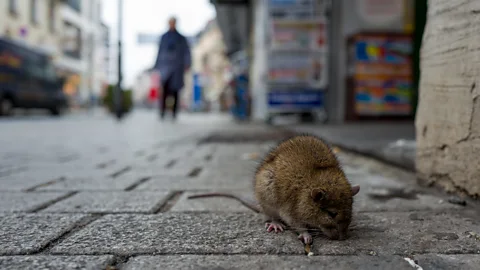 Getty Images
Getty ImagesAnd animals may be using different strategies depending on what kind of resistance they meet in a town or city. One research paper about Cape Town baboons explored whether the primates changed their behaviour depending on the specific locality they were raiding for food.
GPS data revealed that the baboons were particularly good at targeting areas where rangers demonstrated disagreement in how to manage them – over whether to shoo them away or not, for example. In other words, the baboons were exploiting a chink in the armour of local ranger patrols. Wherever they had improved odds of slipping through the net, that’s where they concentrated their efforts.
Proving that pest control makes species cleverer over time remains difficult. There’s only a smattering of evidence to that idea. But Snell-Rood and her colleagues have studied specimens from museum collections spanning a 100-year period. They showed that some species of rodent and other small mammals have evolved larger skulls in environments disturbed by humans.
This is a classic sign that brain capacity has been increasing and suggests, though does not prove that cognitive abilities have been evolving in those species. A few animals studied by the team actually showed a decline in skull size, so it’s certainly not clear that living amongst us always makes animals smarter.
Stanton says she hopes to try out her button-pressing experiment with a variety of raccoon populations in the future, to see whether there are differences between urban and rural populations.
Snell-Rood says she’s confident that human-altered or anthropogenic environments are demanding that some species, at least, use intelligence to survive. And there are probably evolutionary changes going on as a result of that.
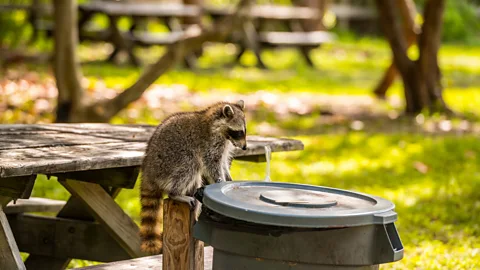 Getty Images
Getty ImagesBut she raises a thought-provoking idea – towns and cities might not always challenge nature in this way. Urban environments, on an evolutionary timescale, are very new. Plants and animals around us are presumably being forced to adapt to some extent but perhaps, after a very long period, the pressure to evolve will die down.
“While anthropogenic environments are favouring cognition and plasticity right now, in a million years that might not be the case,” she says.
That’s because humans make relatively predictable environments. Animals may become more and more specialised to urban spaces and depend on clever strategies less and less. Why learn how to solve a complex puzzle when you can, say, soak up nutrients from sewer pipes?
It’s a tantalising notion that, having challenged nature to adapt so suddenly, we could end up shaping a whole swathe of species to become blithely specialised to life in our midst. When it comes to pests, that might be something we come to regret.
--
If you liked this story, sign up for the weekly bbc.com features newsletter, called “The Essential List”. A handpicked selection of stories from BBC Future, Culture, Worklife, and Travel, delivered to your inbox every Friday.
